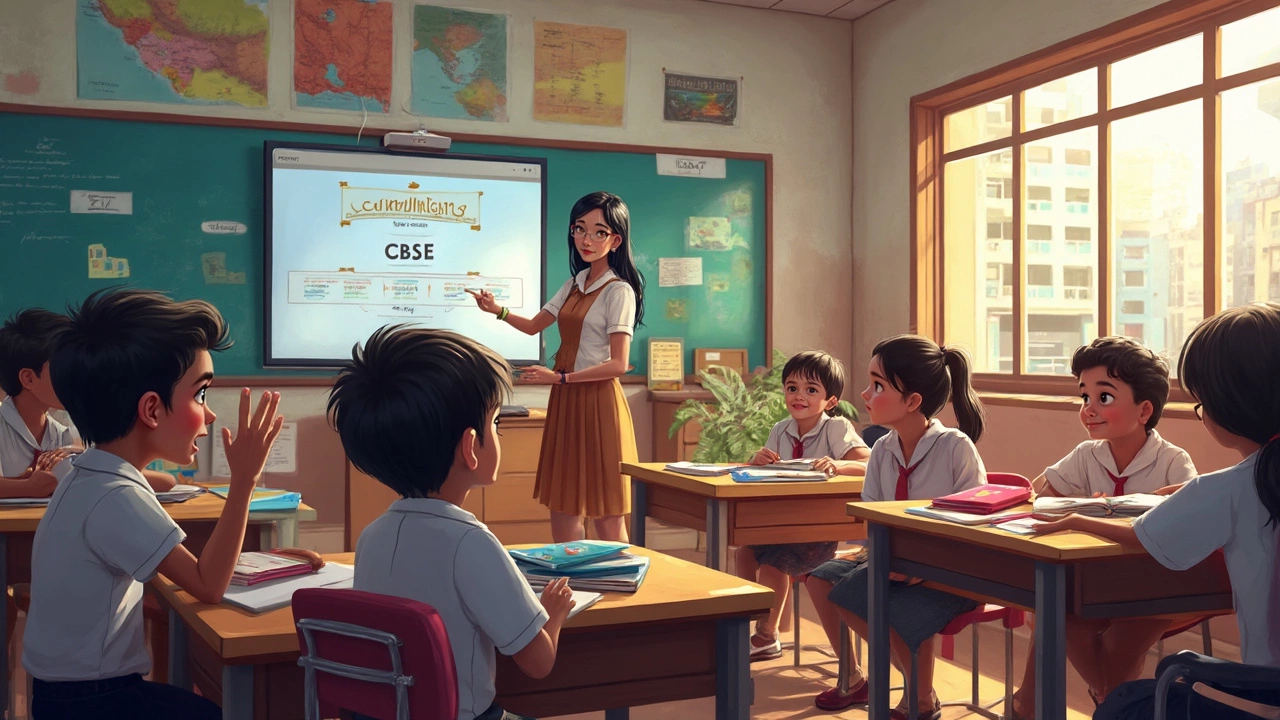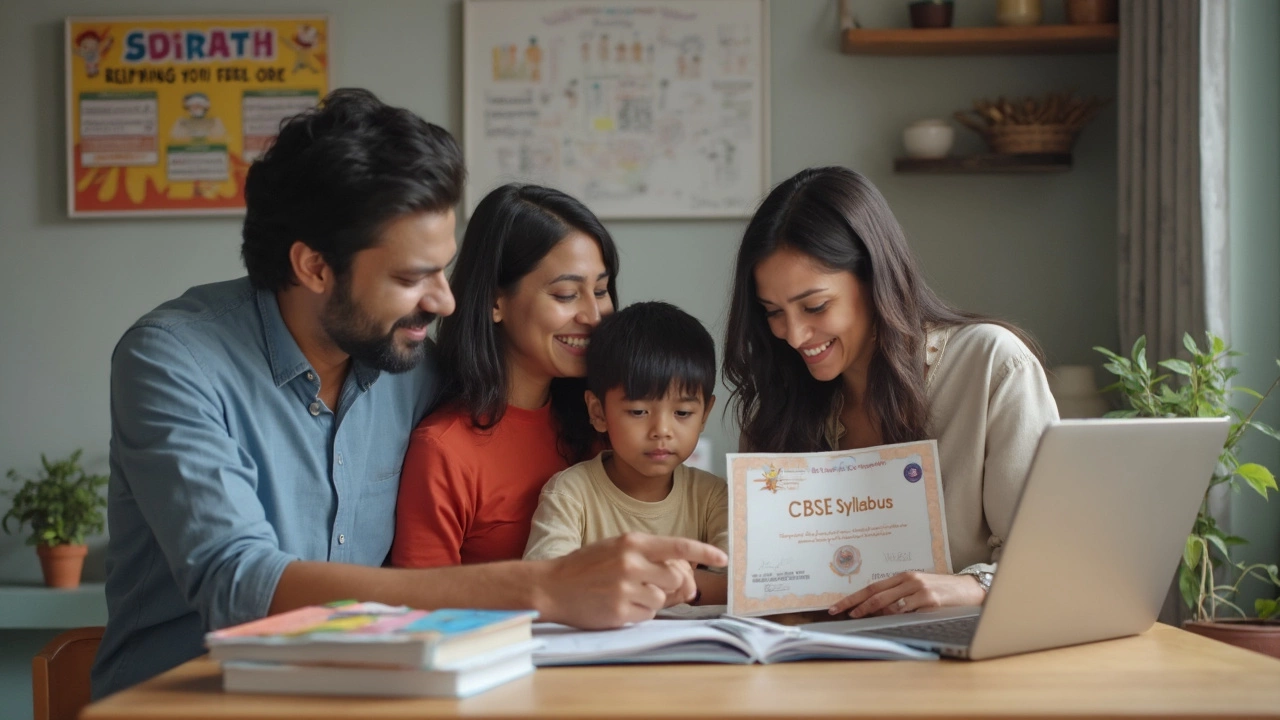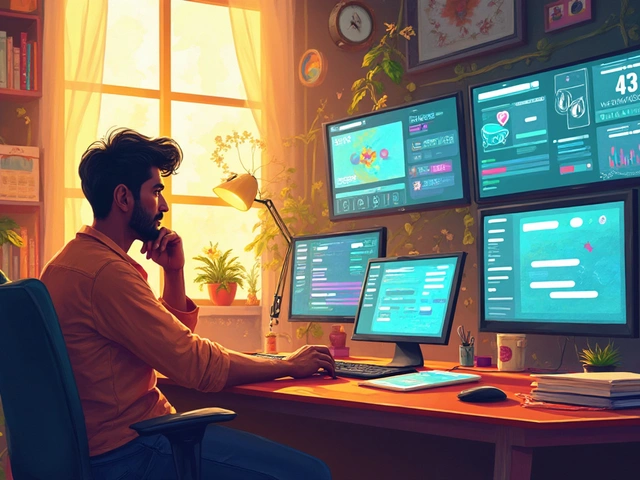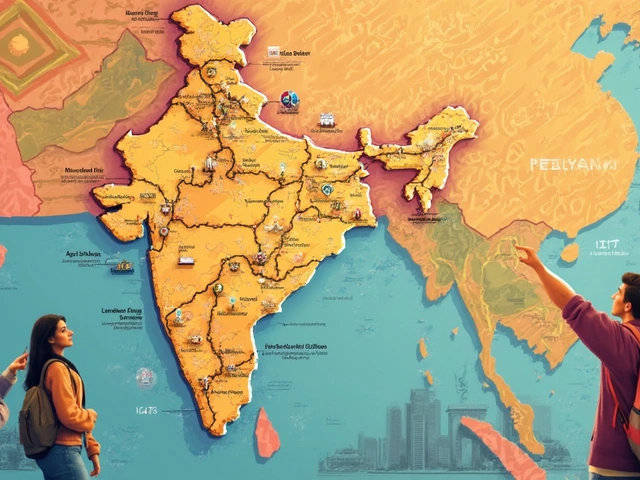
Ever wondered what “CBSE” actually stands for when it comes to school education? It’s everywhere—printed on books, school banners, report cards—but not everyone knows what goes on behind those four letters. CBSE stands for Central Board of Secondary Education. It’s a major school board in India, and it pretty much sets the rules for how millions of students study, what they learn, and even how they sit for big exams.
If your kid’s school mentions following the CBSE syllabus, or even if you’re a student trying to figure things out, knowing what this board does can clear up a lot of confusion. CBSE isn’t just some old committee—it actually plays a huge part in shaping what’s taught from Class 1 to Class 12. And guess what? Its influence goes way beyond textbooks and exams. Many top schools abroad, especially in the Middle East and Southeast Asia, also use this system.
The CBSE board is famous for a few things it does differently. For starters, its curriculum is designed to be fair and student-friendly. You won’t find endless mugging here—CBSE actually wants students to understand stuff, not just memorize answers. That’s one reason so many Indian parents prefer it, especially if they move cities or live abroad. The syllabus stays the same, so kids don’t have to adapt to wild changes every time they move.
- What Does CBSE Stand For?
- How the CBSE Syllabus Works
- Why Students and Parents Care About CBSE
- Tips to Make the Most of a CBSE Education
What Does CBSE Stand For?
CBSE literally means the Central Board of Secondary Education. It’s actually one of the top school boards in India and runs under the Union Government. If you spot the full name on a school’s notice board, now you know what it means. The board has a pretty big job—it manages, regulates, and develops the whole school system for students from Class 1 up to Class 12, and it’s known for setting the most widely used school CBSE syllabus in the country.
Here’s a quick breakdown of exactly what CBSE does:
- Creates and updates the syllabus for all CBSE-affiliated schools every year
- Conducts major exams like AISSE (Class 10) and AISSCE (Class 12)
- Affiliates over 27,000 schools in India and about 240 schools internationally
- Focuses on overall development, not just rote learning
Many folks don’t realize that the CBSE isn’t just a panel of people handed down from Delhi. It started back in 1929 and actually grew out of a need to set a standard for all schools across regions, since India was a massive mix of different boards and curriculums. Now, anyone moving from Delhi to Dubai or Chennai to Chennai—yep, it’s possible—can stick to the same curriculum without a nightmare of adjustments.
Here’s a snapshot of how huge CBSE really is:
| Fact | Details |
|---|---|
| Founded | 1929 |
| Schools Affiliated | 27,000+ (India), 240+ (abroad) |
| Languages Offered | Over 20, includes Hindi and English |
| Major Exams | Class 10 (AISSE), Class 12 (AISSCE) |
If your school says it’s under CBSE, it means you’re part of a system that values practical learning, regular updates, and a nationwide standard. This can make a big difference later—especially if you’re dreaming of switching schools, cities, or even countries for studies or work.
How the CBSE Syllabus Works
The CBSE syllabus is a bit like the master plan for what kids study in school. Unlike some older boards that stick to super-traditional topics, CBSE updates its subjects regularly, using feedback from teachers and even past students. That means you’ll spot recent events and the latest science in their textbooks.
From Class 1 all the way up to Class 12, the syllabus is organized to keep things clear and logical. Subjects start simple and get more detailed as students move up each grade. The board covers all the big ones—Maths, Science, Social Science, English, Hindi—and adds extra choices like Computer Science, Fine Arts, and Physical Education especially in higher classes. Here’s how the structure usually works:
- Primary (Classes 1-5): Focus on basics—reading, writing, maths standard stuff.
- Middle (Classes 6-8): Subjects get a bit tougher. Science and Maths dive deeper, Social Science splits into History, Geography, Civics.
- Secondary (Classes 9-10): Preps students for their first board exam—lots more detail, more regular testing.
- Senior Secondary (Classes 11-12): Students pick streams: Science, Commerce, Humanities. These years set the stage for college or entrances.
One thing that makes CBSE stand out is its NCERT textbooks. These books are written to match the syllabus exactly, which takes away a lot of confusion. Plus, if you’re gearing up for national entrance exams like JEE (for engineering) or NEET (for medicine), you’re in luck. Most of these tests line up neatly with what’s taught in the CBSE syllabus.
The assessment system is split between internal evaluations (like projects, assignments, term tests) and major board exams in Classes 10 and 12. There’s a strong push on understanding instead of just rote learning, so you’ll find more application-based and analytical questions.
| Class Level | Main Focus | Exam System |
|---|---|---|
| 1-5 | Basics, languages, math, creative subjects | School-level assessments |
| 6-8 | Advanced fundamentals, subject split | Term exams & projects |
| 9-10 | Detailed syllabus, board preparation | Class 10 CBSE Board Exam |
| 11-12 | Stream specialization (Science/Commerce/Humanities) | Class 12 CBSE Board Exam |
If you ask any parent why they like the CBSE syllabus, you’ll hear about its simple structure and the fact that it actually makes kids think. It’s straightforward to follow, and because it’s the same across India, even if you move states, your kid doesn’t fall behind or have to repeat content. That’s a massive win for families that move often.

Why Students and Parents Care About CBSE
If you’ve ever chatted with any parent group or peeked into school forums, you’ll notice 'CBSE' comes up a lot. That’s because this board plays a big part in what kind of education kids get, how they’re evaluated, and what opportunities open up later. Here’s why students and parents put so much weight on CBSE.
First, the CBSE syllabus is known for being standard across schools, whether you’re in Delhi, Chennai, or even Dubai. This makes life so much easier for families who shift cities or even countries for work—kids don’t have to start from scratch every time they move. One consistent curriculum means less stress for everyone.
- National Exams: Did you know CBSE conducts two of India’s biggest exams? The Class 10 (AISSE) and Class 12 (AISSCE) board exams are recognized everywhere in the country. These results matter for getting into colleges, and even for job interviews down the road.
- Competitive Edge: Most entrance tests for engineering (like JEE) and medical (like NEET) are based on the CBSE syllabus. This gives CBSE kids a slight head start versus other board students when it comes to cracking those exams.
- English Medium: CBSE schools usually offer strong English language learning. This helps students as English is used in most colleges and companies in India, especially in larger cities.
For parents aiming at big goals for their kids—like studying abroad or applying to national universities—CBSE’s recognized and trusted format is a lifesaver. Universities in India and abroad understand CBSE grades, so there’s a lot less confusion with admissions.
| CBSE By The Numbers (2024) | Details |
|---|---|
| Number of schools | Over 28,800 across India and abroad |
| Students appeared for Class 12 Board Exam | About 1.6 million |
| Countries with CBSE schools | 26, including UAE, Singapore, and Oman |
| Medium of instruction | Primarily English and Hindi |
For students, knowing that the syllabus focuses on understanding and application, not rote memorization, takes off a bit of pressure. It means there’s more room for learning ‘why’ rather than just memorizing ‘what’. That’s a win in my book!
Tips to Make the Most of a CBSE Education
Making the most of a CBSE education isn’t just about acing exams, but also about knowing how to handle the system smartly. CBSE focuses a lot on conceptual understanding, not just rote learning. This means students who get into the habit of truly understanding what’s in their textbooks (and beyond) will do way better—not only in school but in future competitive exams too.
Here’s what actually helps:
- Stick to the NCERT books: If you’re ever lost, go back to the basics. Most CBSE questions come straight from the official NCERT books, especially in board exams. CBSE toppers often swear by reading them cover to cover.
- Sample papers and previous years’ questions: These aren’t just practice—they’re the game plan. Solving papers from the past 10 years helps spot patterns and boosts confidence.
- Focus on understanding, not mugging: CBSE loves asking application-based and HOTS (Higher Order Thinking Skills) questions. If you focus just on cramming, you’ll get stumped. Break down chapters, make notes in your own words, and discuss tough topics with friends or teachers.
- Manage your time clearly: Make a timetable where you tackle tough topics first. Leave time for revision and practice tests every week. It’s not just about how long you study, but how smart you plan.
- Check out online resources: CBSE itself has a student portal (cbseacademic.nic.in) loaded with syllabi, sample papers, and marking schemes. Popular learning platforms like Toppr, Byju's, and Khan Academy have special CBSE-focused content that’s actually worth it.
If you’re someone who’ll one day give entrance exams like JEE or NEET, here’s a kicker—over 70% of questions in these national tests are directly based on the CBSE syllabus. Students who stick with CBSE find it way smoother to prep for these big exams.
| Resource | Why it helps |
|---|---|
| NCERT Textbooks | Source of almost all exam questions |
| Sample Papers | Practice real exam patterns |
| CBSE Portal | Official updates, marking schemes |
| Online Videos & Quizzes | Breakdown of tricky topics |
One more thing—don’t stress about moving between schools. The uniform syllabus is a life saver if your family, like mine or my friend’s, has to change cities often. Being familiar with the same curriculum everywhere means you never have to play catch-up.
Last tip: stay organized. Keep notes, worksheets, and revision charts handy. Believe me, having a quick recap stash makes all the difference right before term exams and boards. It’s all about making the system work for you, not the other way around.





